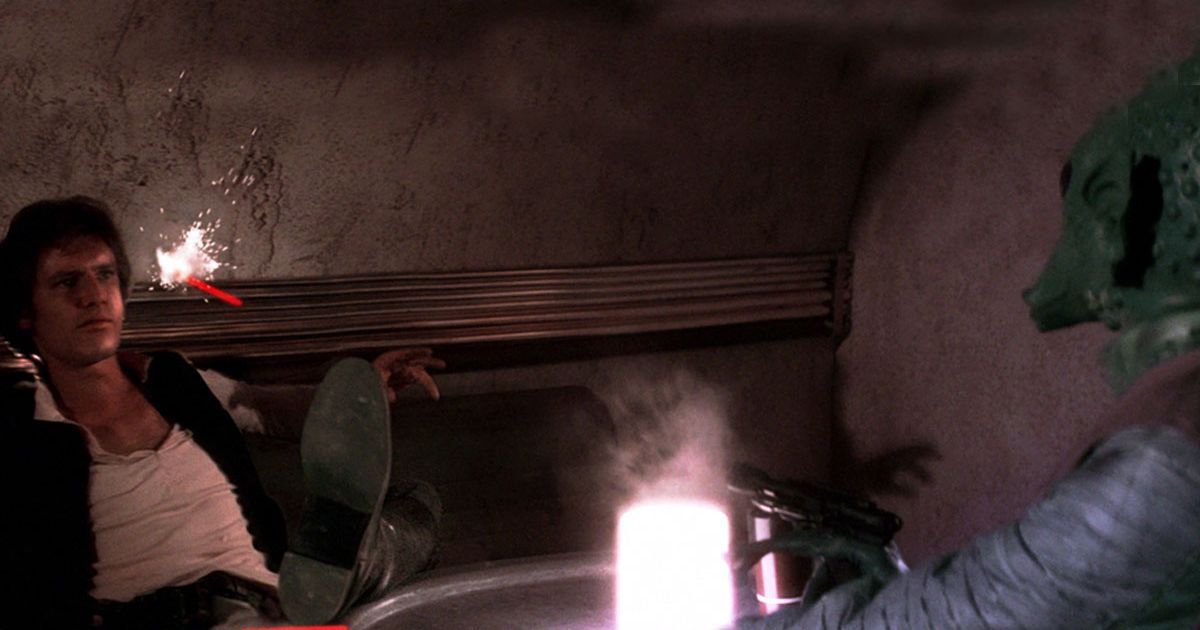Part of what keeps Star Wars alive is the sprawling breadth of its world-building. No detail is too small, and even brief characters might spawn a fanbase. Some of its concepts have big implications, even if they go lightly explored in canon. The galactic underworld came to life in A New Hope through spice smuggler Han Solo, but the question of why his smuggling business was so shady was left vague.
Here, we'll explore what spice is and the perilous implications it has on both its users and dealers.
What Is Spice?
'Spice' is a catch-all term for a number of illegal substances in the Star Wars galaxy. Products like ryll and glitterstim earn few recent mentions but remain a canon part of underworld drug currencies. Sansanna spice is referenced in Star Wars: The Clone Wars during several fifth season episodes, drawing the eye of space pirate Hondo Ohnaka when a crate of the drug falls into his hands. More commonly, the drugs are simply called spice, with the mines of Kessel being a primary supplier.
In all cases, the motif is the same. Spice is a particulate narcotic, valued by the underworld market. Like real-world opiates, the raw product can be used for medical purposes. Processing makes it not only addictive but a useful crime-world currency. Its appearance in a story is a shortcut to saying there are shady dealings afoot, and the vagueness of what spice is keeps the implications relatively kid-friendly. Referencing the product gave Poe Dameron a pinch of troubled backstory in Rise of Skywalker, while Timothy Zahn's new Thrawn novels used a spice variant called polstine as a potent way to blackmail Arihnda Pryce.
Both Clone Wars and Solo: A Star Wars Story expanded on the underground value of spice. The Clone Wars introduced the Pyke Syndicate as a major supplier to the spice market in addition to militant schemes that put them on a collision course with Darth Maul's Shadow Collective. Solo showed the depths of the syndicate's pockets, with Han Solo joining Tobias Beckett's crew in a raid on Kessel and its slave-labor mining facilities.
Why Is It Dangerous?
Some spice variants' effects are described in non-canon sources. Ryll spice, for example, is explained as having an effect close to morphine. It's heavily addictive, while it can be used medically as a painkiller or anesthetic. Addicts could theoretically swing from lethargic to dangerously needy, its victims craving another high and willing to turn to violence to get it.
A potent mind-altering substance, glitterstim spice awakens or enhances a person's telepathic abilities, as Han Solo discovered in the Legends novel Jedi Search by Kevin J. Anderson. Glitterstim addiction could also lead to anxiety, blindness and neurological tremors, with seductively easy death by overdose. Glitterstim also became a source of behind the scenes controversy when Anderson drew a direct line between the Kessel spice runs and Han Solo's life as a smuggler. Though he was backed in this assertion by George Lucas, Lucasfilm was initially uncomfortable with admitting that Han's early criminal career was in fact criminal.
Reference materials for Star Wars Rebels, including The Visual Guide by Adam Bray, codify that in today's canon, spice, in general, is a dangerous narcotic. It's almost always a product of slave labor, valued by deadly cartels. That's more than enough to give the commodity a sense of real danger, putting anyone chasing a high too close to people willing to abuse them and their helpless addiction. While Star Wars has never given its illegal drugs the kind of power seen in other franchises like Dune, exploring its secretive underworld is a heady treat all its own.



